A) o-chlorobenzaldehyde
B) m- chlorobenzaldehyde
C) p-chlorobenzaldehyde
D) styrene
E) 1-chlorobenzaldehyde
Correct Answer

verified
Correct Answer
verified
Essay
Classify the following compounds as aromatic, antiaromatic, or nonaromatic. Explain your choice. 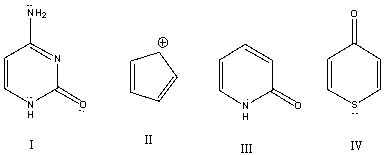
Correct Answer

verified
I. Aromatic
It is cyclic, planar, conjug...View Answer
Show Answer
Correct Answer
verified
It is cyclic, planar, conjug...
View Answer
Short Answer
For disubstituted benzene derivatives, the descriptors ortho, meta, para are used when the parent is usually a ________.
Correct Answer

verified
Correct Answer
verified
Essay
Provide a structure for the compound with molecular formula C9H9ClO and with the following spectroscopic data. IR: 1680 cm−1 1H NMR: 3.5 (triplet, I=2H), 4.0 (triplet, I=2H), 7.4 (triplet, I=2H), 7.6 (triplet, I=1H), 7.9 (doublet, I=2H)
Correct Answer

verified
Correct Answer
verified
Essay
Classify the following compound as aromatic, antiaromatic, or nonaromatic. Explain your choice. 
Correct Answer

verified
nonaromatic
It is cyclic, but ...View Answer
Show Answer
Correct Answer
verified
It is cyclic, but ...
View Answer
Short Answer
What is the common name for the following compound? 
Correct Answer

verified
Correct Answer
verified
Essay
Classify the following compounds as aromatic, antiaromatic, or nonaromatic. Explain your choice. 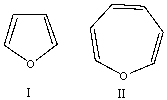
Correct Answer

verified
I. Aromatic
It is cyclic, planar, conjug...View Answer
Show Answer
Correct Answer
verified
It is cyclic, planar, conjug...
View Answer
Multiple Choice
What is the main difference between an aromatic and antiaromatic compound?
A) Aromatic compounds must be cyclic and planar, but not antiaromatic compounds
B) Aromatic compounds must be monocyclic.
C) Antiaromatic compounds must have a conjugated system with p orbital at every vertex
D) Aromatic compounds must satisfy Hückel's rule.
E) none of these
Correct Answer

verified
Correct Answer
verified
Essay
Classify the following compound as aromatic, antiaromatic, or nonaromatic. Explain your choice. 
Correct Answer

verified
Nonaromatic
It is cyclic, but ...View Answer
Show Answer
Correct Answer
verified
It is cyclic, but ...
View Answer
Essay
Classify the following compound as aromatic, antiaromatic, or nonaromatic. Explain your choice. 
Correct Answer

verified
Aromatic
It is cycli...View Answer
Show Answer
Correct Answer
verified
It is cycli...
View Answer
Multiple Choice
Provide the product for the following reaction? 


A) I
B) II
C) III
D) IV
E) V
Correct Answer

verified
Correct Answer
verified
Essay
Provide a structure for the compound with molecular formula C10H12O2 and with the following spectroscopic data. IR: 1680 cm−1, 2750 cm−1, 2850 cm−1 1H NMR: 1.1 (triplet, I=3H), 3.5 (quartet, I=2H), 4.5 (singlet, I=2H), 7.3 (doublet, I=2H), 7.7 (doublet, I=2H), 9.9 (singlet, I=1H)
Correct Answer

verified
Correct Answer
verified
Multiple Choice
Which one of the following compound is nonaromatic? 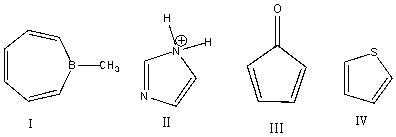
A) I
B) II
C) III
D) IV
Correct Answer

verified
Correct Answer
verified
Multiple Choice
What is the IUPAC name for the following compound? 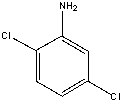
A) 3,4-dichloroaniline
B) 2,4-dichloroaniline
C) 2,5-dichloroaniline
D) 3,6-dichloroaniline
E) 2,6-dichloroaniline
Correct Answer

verified
Correct Answer
verified
Multiple Choice
Which one of the following compounds is most acidic? 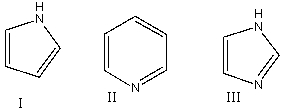
A) I
B) II
C) III
D) I & III
E) II & III
Correct Answer

verified
Correct Answer
verified
Essay
Classify the following compound as aromatic, antiaromatic, or nonaromatic. Explain your choice. 
Correct Answer

verified
Aromatic
It is cycli...View Answer
Show Answer
Correct Answer
verified
It is cycli...
View Answer
Multiple Choice
Which one of the following compounds is aromatic? 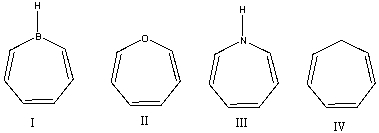
A) I
B) II
C) III
D) IV
Correct Answer

verified
Correct Answer
verified
Essay
A compound with molecular formula C10H14 displays the following IR, 1HNMR, 13CNMR spectra. Propose a structure for this compound. 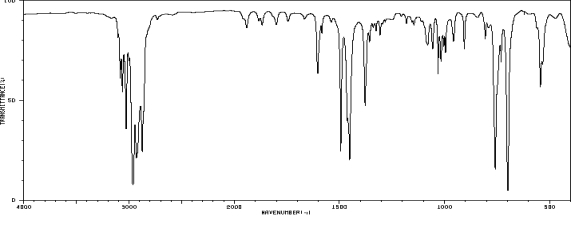
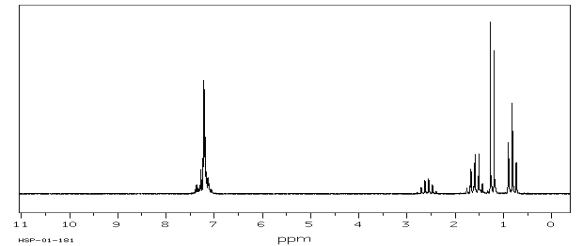
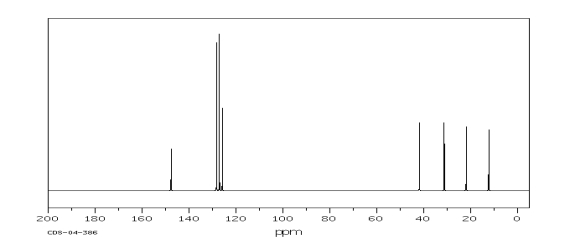 SDBS
SDBS
Correct Answer

verified
Correct Answer
verified
Multiple Choice
Provide the structure of the major product(s) for the following reaction. 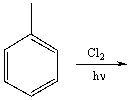

A) I
B) II
C) III
D) IV
E) Both I and II
Correct Answer

verified
Correct Answer
verified
Essay
Predict the product for the following reaction. 
Correct Answer

verified
Correct Answer
verified
Showing 21 - 40 of 98
Related Exams